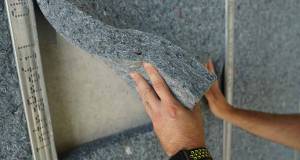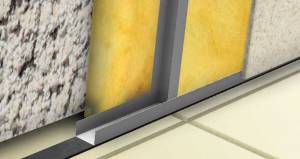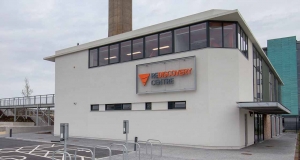- Design Approaches
- Posted
Interior Motives

More and more consumers are becoming aware that a building’s interior should not only be pleasing to the eye, but durable, environmentally friendly and conducive to good health. In line with a growing consumer demand, the availability of green products is constantly increasing, leading to a situation where product quality need not be compromised in a search for a more eco friendly interior, as Jill Phillips of zero4zero7 interior design explains.
The fast developing green approach to interior design is new, exciting and creative. Design in the emerging green interior market is sleek, contemporary and highly durable, aided by a new breed of designers and manufacturers very much at the forefront of creativity. As a designer, such an approach can be more challenging and creative, using products and surfaces designed especially for the client’s needs and preferences.
A commercial space should be one of calm stimulation, whereas the home should be a cocoon of warmth and security.
Our interior space can have profound effects on us without our realising. Typically in this world of material things we strive for a space we desire, creating an image, showing the world who we are; but now the boundaries are moving. Clients require more than the “wow” factor: we are increasingly expanding in values and aspirations and so interiors need to fulfil this request. We want to receive an experience from our space; our senses need to be massaged at all levels whilst we still yearn for excellently designed products.
Sight, hearing, touch, taste and smell need to be stimulated—ignoring this means a chance of not being in tune with our whole being. We are profoundly sensual beings, and need this stimulation to remain whole. The interior look is important as it reflects who we are and our surrounding needs and desires; we need to be in tune with our home to feel comfortable within it. The art of design is to use the space to its best advantage using light, colour and texture to engage feelings and good energy.

The interior design basics remain the same, concerned with space and function, colour and texture and light, inviting luxury and detail in the form of star or theatre pieces to give the drama in the interior where needed.
Regarding space and function , it is crucial to be aware of how the client likes to live, and to design a space which is fully functional for the consumer. It is key to start with a realistic budget, no matter how we like to dream of great things; good design is great design when the client gets the most from the budget. Plans and elevations allow the client to see how the layout and space will work for them. A mood is created with the style of pieces used to create an overall theme. Clients choose what the space will be used for and the interior designer will create the type of mood needed to best enhance this whether this is relaxing, stimulating, calm, extrovert or energised. Objects used within inject character into a room and the scale of these is very important.

Creating a space and mood makes colour a very important factor within the area. It can be warm or cool, and the lighting of the room can also have a huge effect on the colour and should be coloured accordingly. Texture can also add warmth, softness, harshness, and so on. Clever mixing of texture adds energy to a room; it works visually as textures play off one another within the space. Stimulating the senses through texture and colour is very important.
Lighting needs to be taken into account from the start. Where is the natural light? How does it flow throughout the day? It should shift and change to allow the client best use of the room for its function whilst still reflecting a mood. Some rooms need to be flexible to change according to the mood of the consumer, and variety and flexibility need to be created, ranging from functional during the day to relaxing at night.
Calm, quiet and harmonious interiors are also beneficial to our health through stimulation of the senses, but what about the effects we can not see which are not beneficial to the body? Creating an environment which is both stimulating and beneficial for the user is the challenge. What is the balance between these two concerns? What is a beneficial environment and how do we achieve it?
Having a “green” interior is not a choice of second best regarding design; it becomes a choice of a substitution with the highest design elements involved. Defining what makes a “green” interior involves many complex issues, not just with regards to sustainability of natural resources, but also with the energy consumed in processing, transport and durability, and with regards to the effects on our health. It is probably not possible to avoid non-green materials either, but they can be used minimally to enhance the design within the room. It is all about achieving what the client requires combined with the best green option.

Additionally, evaluating the impact of a material and its embodied energy is important, looking at the sum of energy used at all stages of the process. Factors to take into account include the raw material transport to the factory, processing and transport to the point of end use. The fewer steps that are taken, the better the environmental impact.
Just as significant is the way in which the material is used. For instance, a high embodied energy material such as metal used in a small way may have a huge impact on the durability and performance of the product and may be a plus to use. This in turn makes this substance beneficial to the design.

This leads us on to recycled products, of which there are two main types. Direct recycling from buildings —salvaged materials such as flooring— saves a great deal of energy, protects natural resources and in many cases has the look that people desire. An alternative is the more complex option of recycling products which use energy in their conversion into another product. This is more complex and needs to be taken into account. When plastic for example ends up on a landfill site it does not biodegrade, so it is best to recycle it if the finished product is of suitable quality.
Such an approach is not about having to lower your aspirations for a better environment. Taking the same high level of design and quality and choosing the correct product for you allows the consumer to have an extraordinary space. The complete interior space can now be filled with amazing products, throughout every room, from floor to ceiling.
Environmental paints have been selling in the market for some time, possessing practical and decorative benefits for the consumer, and allowing the room to “breathe”, hence the natural surfaces underneath are not compromised. Commercial paints have VOC’s present from chemicals which reduce the indoor air quality and also affects the structure underneath. Natural paints do not pose a threat to indoor air quality, although a very small percentage of people are allergic to the natural oils in some. Now that wallpaper is fashionable again we can look to manufacturers who use recycled or sustainable paper along with the appropriate dyestuff. The wallpaper paste can also be from a supplier who is eco-friendly.
Flooring can come in many forms, from sustainable wood through to recycled products. The flooring sector is developing rapidly leading to a broad range of greener options. For example, carpet manufacturers are now looking at how best to reduce the landfill generated by carpets, there are companies who are recycling old carpets and using then as backing into the new carpet and a company who is now producing a biodegradable carpet made from 80% recycled nylon.
Amazing bathrooms are available made from recycled plastic, which manage to be contemporary in design, soft and velvety to the touch and very durable. Kitchens are a delight for the interior designer because they can by designed from a broad range of surfaces available on the market, which can create modern sleek kitchens which are unique to the client and very durable.
Another available surface is recycled glass which can be shaped and moulded into many forms creating a very durable product. Sustainable wooden surfaces for wall coverings create contemporary features.
Fabrics manufacturers are looking towards organic cottons and dyes, with some looking further a field to fibres such as paper with excellent results. Bamboo is another fibre which is slowly creeping into our everyday environment.

Furniture comes in many forms, ranging from wooden products from sustainable forests through to recycled products, leading to a variety of extraordinary design which may have been lacking in previous years. Recycled furniture can be as good in quality as the product was in its 1 st lifetime—recycled no longer looks recycled. The consumer market has a huge and growing variety in style and form of green furniture products.
This broad range of new products will allow us as consumers to make valuable choices for us and our surroundings, which are beneficial both for people and the environment.
Quality design and high specification products are available in the market allowing us to have no compromise in our values and our passion for clever, functional design-led environments. It may be the case that we are still not yet in a position to create a completely green environment for interiors. It may never be possible to be in that position but with this new influx of design-led products which are beneficial to our health and our environment, things are ameliorating by the day.




